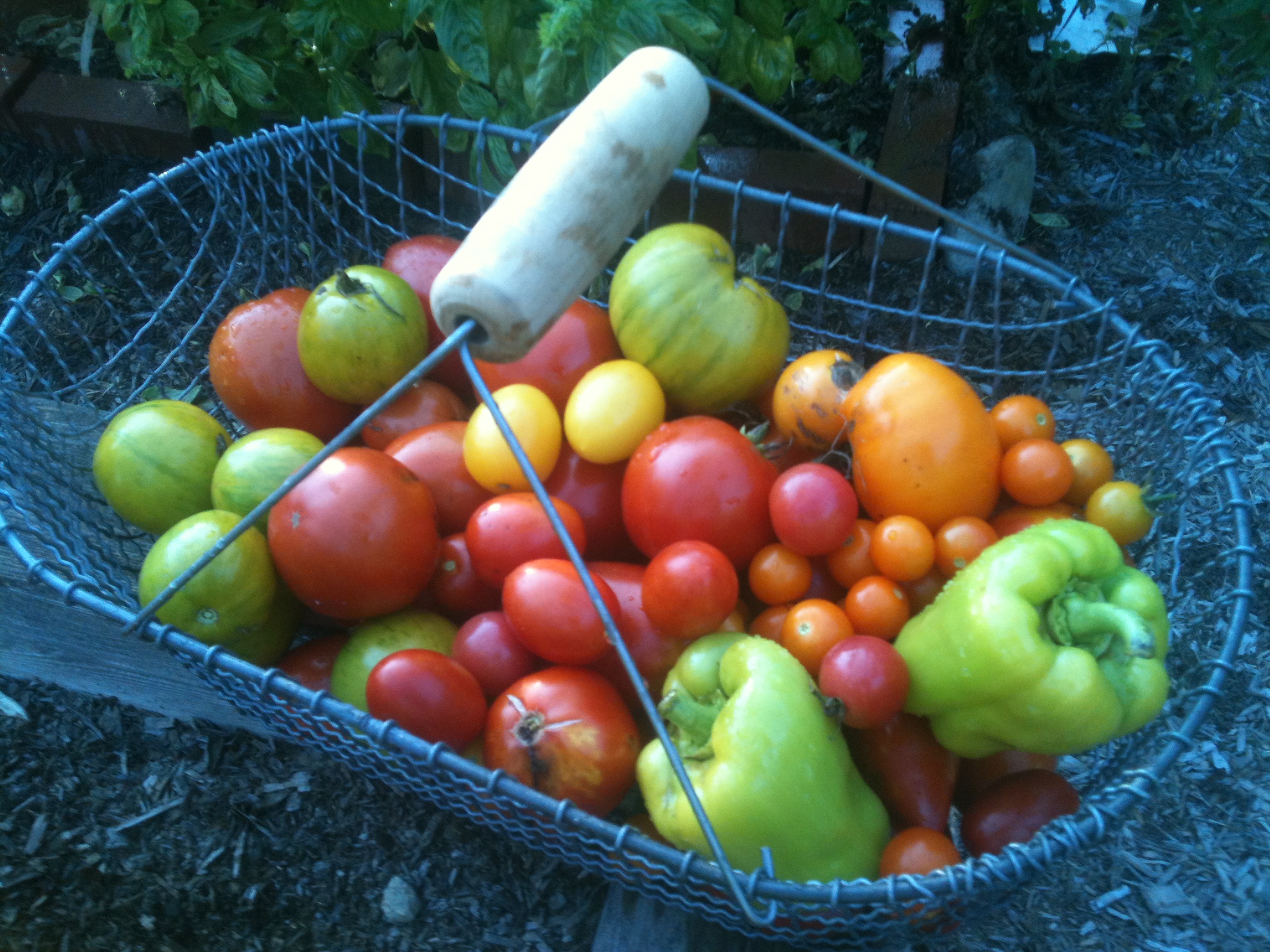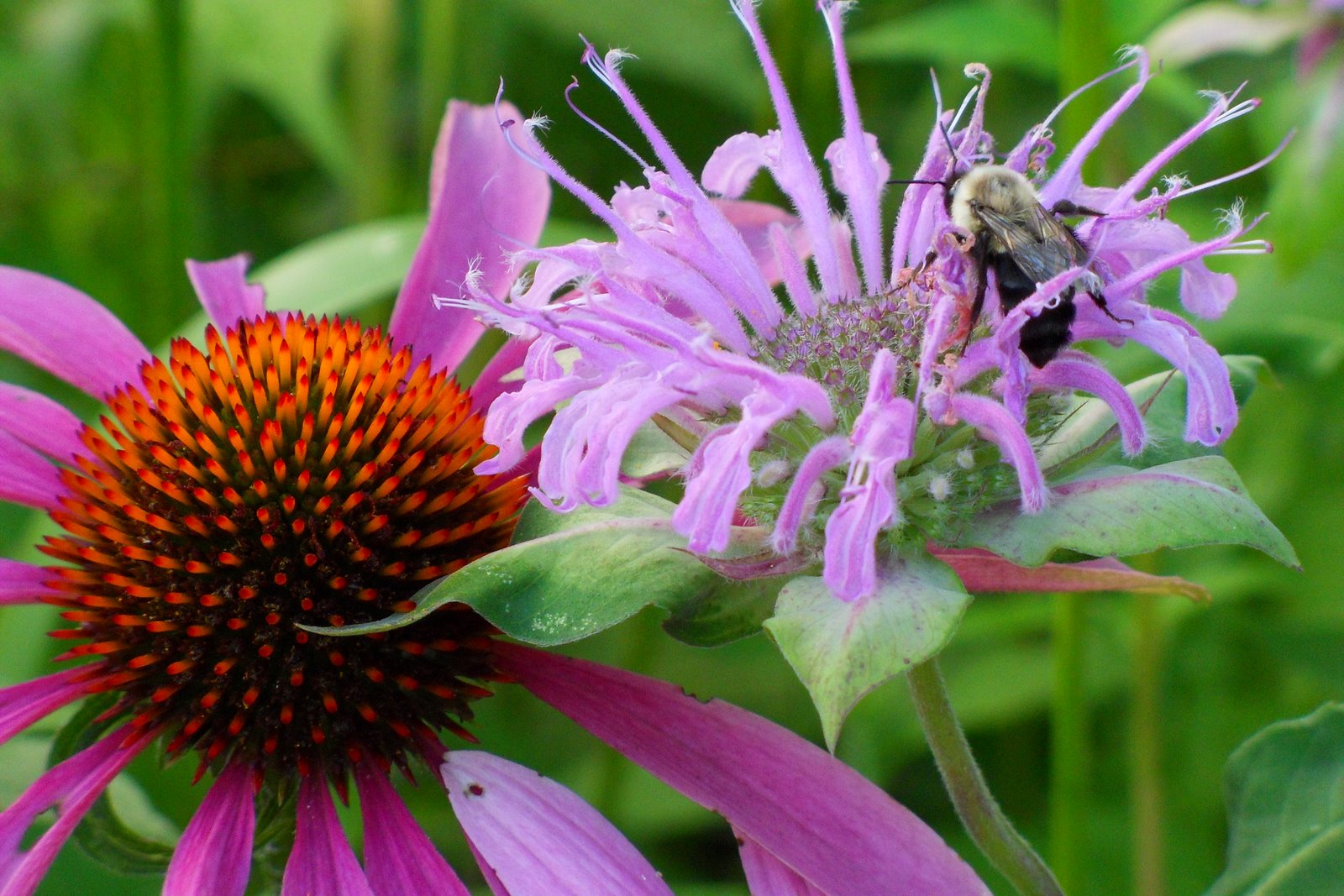When you get inspired to grow your own vegetables, there are a few things that you need to consider. It will take some work to begin and tend to a vegetable garden but it is very rewarding. Enjoy and happy gardening!

1. Who can grow vegetables? Everyone! You can grow as little or as much as you’d like, you are only limited by how much time you have and the space you have to work with. Taking on more than you can handle can be overwhelming and hard to maintain.
2. Available space. The more sun your beds get, the better. If you have 4-6 hours of sun in your garden, your plants will take longer to grow so you should look for early producing vegetable varieties that will give you better success in our northern climate. Some examples are listed under “What To Grow”. Many tomato varieties are indeterminate (continue to grow all season) so adding a tomato cage around the plant is important. You can use cotton string or hemp twine to trellis the branches or stem to the wire cage. This will keep the plant off the ground and give them space to grow upward and provide better airflow. If you do not use wire cages, trellising plants to the fence of your garden will also work. Other plants that need trellising are cucumbers, peas and beans.
3. Size and Height of the garden. Raised beds help to provide the plant roots with new, healthy soil and enough room to grow. Connecticut is very rocky, so simply turning over the soil in your yard may provide you with many rocks, which if you cannot remove, will make it difficult for vegetables to grow in or around. You can build your own raised garden beds or buy them. You can also build or buy elevated beds which are on legs so that you can work on them standing up or sitting in a chair.
4. Potted vegetables. Container gardening is increasingly popular, many vegetables come in “container” or “patio” varieties where they grow smaller plants. Vegetables can grow in any type of flowerpot, container, recycle bin, bucket, grow bag, etc. Potted plants dry out quicker, so be prepared to water more often.

5. Keeping animals out! Whether you build a garden or use patio containers, you will need to protect them from animals such as deer, groundhogs, squirrels, chipmunks, birds, and bunnies. Putting up a fence to keep animals out is usually the best option. Some gardeners even put bird netting over their garden and attach it to the fence to keep out the birds. Netting can be used to put over container gardens too. Squirrels, chipmunks, and birds can easily access containers on your deck or patio. Chicken wire is also useful to construct cages to put over or around your potted plants or to line the bottom of your raised beds to prevent rodents from coming up from under ground. There are many instructional videos that you can find online for ideas on these preventative measures. Some examples include hanging a bar of Irish Spring soap to deter deer, sprinkling cinnamon or cayenne pepper around the plant, putting hair from your hairbrush around your plants, hanging wind chimes or hanging shiny objects like an old CD, pie tins or Mylar balloon to scare birds and animals away. Fencing is also useful when you need to trellis plants for support and proper airflow.
6. Watering. Whether you build a garden or use patio containers, you have to consider how you will water your plants. Where is your water source in comparison to your vegetables? Some gardeners install a drip irrigation system in their garden, others set up a sprinkler and run a hose out to the garden. Watering plants is best done early in the day and at the soil level as evening watering and overhead watering can promote disease such as blight and wilt.
7. Proper Soil and Fertilizers. Good quality soil is important for the success of plant growth. Many nurseries, local hardware stores or big box stores carry plant soil, compost, mulch, and fertilizers. Combining both gardening soil and compost will make the dirt lighter and airy to enable roots to grow easily while replenishing nutrients and deficient soils. In most cases, regular yard soil is not ideal as much of the soil in Connecticut has a high percentage of clay and is very compacted. Mulch is important to help prevent erosion and retain moisture in the soil. There is a lot of information online about which plants like more acidic soil and others that do not. You can research about testing your soil and what nutrients or fertilizer you may need to add to your soil to help. For example, adding coffee grounds will help make the soil more acidic which some vegetables need.
8. What to Grow. For beginners, you want to grow vegetables that you like to eat and ones that will grow successfully so that you will want to garden again next year! Grow vegetables you like to eat. The following cab easily be grown in CT: green leafy vegetables such as romaine lettuce and spinach, tomatoes, strawberries, blueberries, squash, and herbs. The Farmer’s Almanac online has great information for when you can plant vegetables outside based on the estimated last frost date, as well as other great information. Many seed companies have a time chart for planting and growing plus what plants are heartier for Connecticut weather. Some early seed varieties include include ‘New Girl’, ‘Early Girl’ or ‘Super Beefsteak’ Tomatoes, ‘Earliest Red’, ‘Gypsy’ or ‘Bellboy’ Peppers, ‘Tenderpod’ or ‘Topcrop’ Green beans, ‘Slik Pik’ Summer Squash, ‘Northern Pickling’ or ‘Sweet Success’ Cucumbers and ‘Jambalaya’ Okra. With each growing season, you will be excited to try growing new vegetables. Go for it!
9. Pollinators, Insects, and Natural Remedies. Another important thing to consider is surrounding your vegetable plants with flowers that will attract pollinators. With the decrease in natural pollinators due to the overuse of pesticides, having flowers that attract pollinators will greatly increase the success of your vegetable growth. A few examples of pollinator plants that are also natural deterrents are marigolds, allium and lavender. Many herbs are also wonderful for attracting pollinators such as chive, basil and dill, which all produce flowers. Try natural and safe insect repellent or remove the insects by hand and take them away from your garden. Some insects to look out for are whiteflies, beetles, aphids, and hornworms. There are simple tricks to keep insects away from the base of your plants such as sprinkling crushed eggshells around the base of the plant, placing toilet paper tubes covered with petroleum jelly or solo cups with the bottoms cut off around the stem.

10. Don’t give up! Gardening is an imperfect science. Successful gardening takes into consideration many different factors. Changes in weather will have a severe impact on your vegetable garden. One year, you will have too many cucumbers to eat, while the next year the pollinators didn’t pollinate your flowering cucumber plant and you yield very little. Each year is different. Start small and be patient. As you go along, you will find what works for you and your garden.


